Human Orbital Spaceflights
![]()
International Flight No. 126STS-33Discovery (9)32nd Space Shuttle missionUSA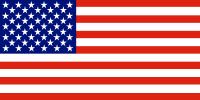 |
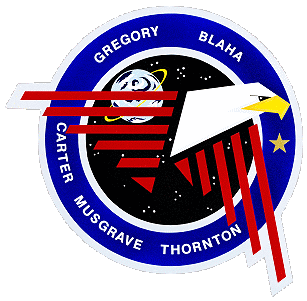 |
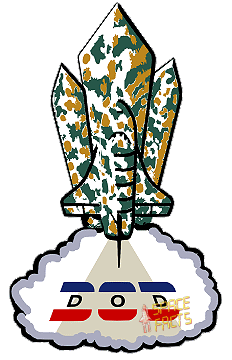 |
![]()
Launch, orbit and landing data
walkout photo |
 |
|||||||||||||||||||||||||||||
alternative crew photo |
alternative crew photo |
|||||||||||||||||||||||||||||
alternative crew photo |
alternative crew photo |
|||||||||||||||||||||||||||||
alternative crew photo |
alternative crew photo |
|||||||||||||||||||||||||||||
Crew
| No. | Surname | Given names | Position | Flight No. | Duration | Orbits | |
| 1 | Gregory | Frederick Drew | CDR | 2 | 5d 00h 06m 46s | 79 | |
| 2 | Blaha | John Elmer | PLT | 2 | 5d 00h 06m 46s | 79 | |
| 3 | Carter | Manley Lanier, Jr. "Sonny" | MS-1, EV-1 | 1 | 5d 00h 06m 46s | 79 | |
| 4 | Musgrave | Franklin Story | MS-2, FE | 3 | 5d 00h 06m 46s | 79 | |
| 5 | Thornton | Kathryn Cordell Ryan | MS-3, EV-2 | 1 | 5d 00h 06m 46s | 79 |
Crew seating arrangement
|
 |
|
||||||||||||||||||||||||
Hardware
| Orbiter : | OV-103 (9.) |
| SSME (1 / 2 / 3): | 2011 (4.) / 2031 (2.) / 2107 (1.) |
| SRB: | BI-034 / RSRM 7 |
| ET: | ET-38 (LWT-31) |
| OMS Pod: | Left Pod 04 (6.) / Right Pod 01 (11.) |
| FWD RCS Pod: | FRC 3 (9.) |
| RMS: | - |
| EMU: | EMU No. 2006 (PLSS No. 1013) / EMU No. 2005 (PLSS No. 1009) |
Flight
|
Launch from Cape Canaveral (KSC) and
landing on Edwards AFB, Runway 04. The launch was originally scheduled for November 20, 1989, but was delayed because of suspect integrated electronics assemblies which control ignition and separation of the Shuttle's solid rocket boosters. S. David Griggs, the originally scheduled pilot for this mission, died in a plane crash 5 months prior to the shuttle launch. He was replaced by John Blaha. This flight was the fifth mission dedicated to the Department of Defense, and most information about it remained classified. For the fourth time, NASA did not provide pre-launch commentary to the public until nine minutes before liftoff. It was the third military mission without a MSE among the crew members. Mail goal was to deploy the reconnaissance satellite "Big Ear" (Magnum 2; USA-48), a secret Magnum ELINT (ELectronic INTtelligence) satellite. The satellite replaced the one launched by STS-51C, which was running out of the maneuvering fuel required for keeping its station over the Indian Ocean. The satellite was deployed on the 7th orbit, and ignited its Inertial Upper Stage (IUS) booster at the ascending node of the 8th orbit, successfully placing it in a geosynchronous transfer orbit. This was the 8th IUS launched aboard the shuttle, and the seventh successfully deployed. According to Jim Slade of ABC News, the satellite was intended to eavesdrop on military and diplomatic communications from the Soviet Union, China, and other communist states. Aviation Week claimed that the shuttle initially entered a 204-kilometers (127 mi) x 519-kilometers (322 mi) orbit at an inclination of 28.45 degrees to the equator. It then executed three Orbital Maneuvering System (OMS) burns, the last on its fourth orbit. The first burn was to circularize the orbit at 519 kilometers (322 mi). STS-33 was observed by the 1.6m telescope of the US Air Force Maui Optical Station (AMOS) during five passes over Hawaii. Spectrographic and infrared images of the shuttle obtained with the Enhanced Longwave Spectral Imager (ELSI) were aimed at studying the interactions between gases released by the shuttle's primary reaction control system and residual atmospheric oxygen and nitrogen species in orbit. Frederick Gregory became the first Afro-American spacecraft commander. The landing was postponed for one day because of strong winds at the landing site. |
Photos / Graphics
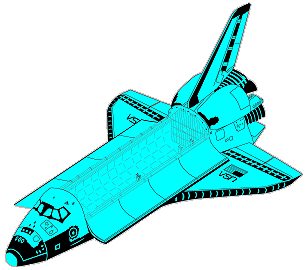 |
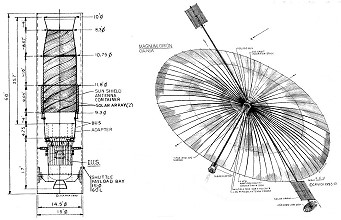 |
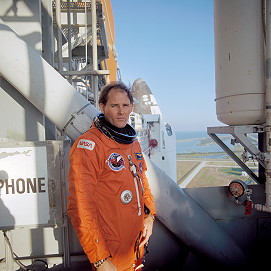 |
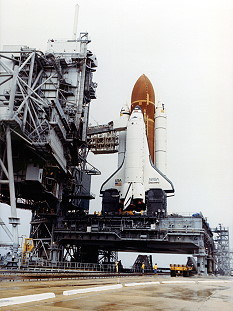 |
 |
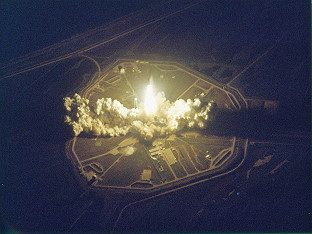 |
 |
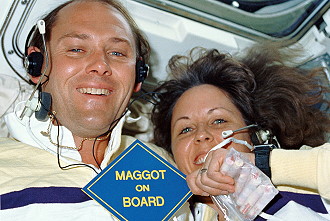 |
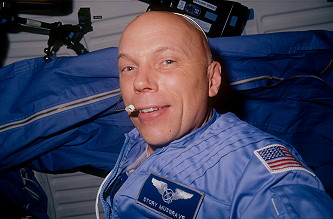 |
 |
 |
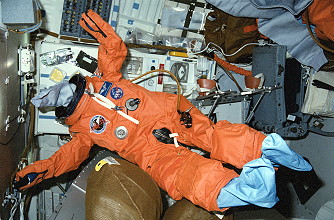 |
 |
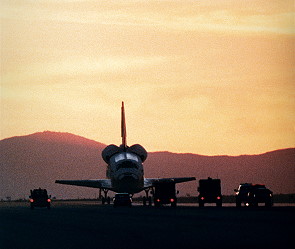 |
Earth observation photos |
|
| © | 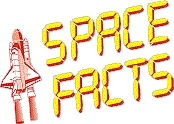 |
Last update on September 06, 2021.  |
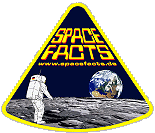 |